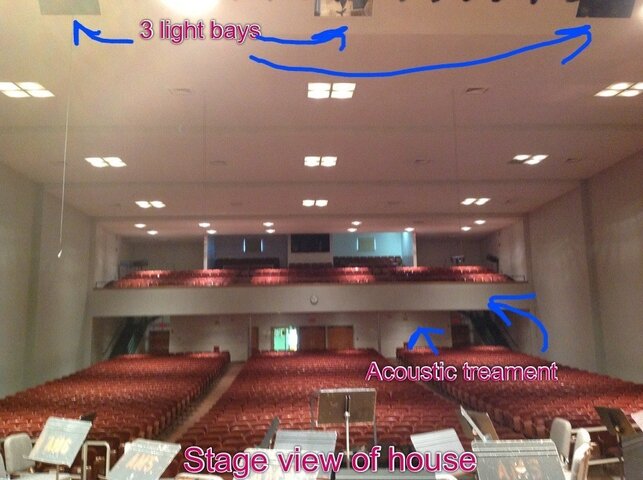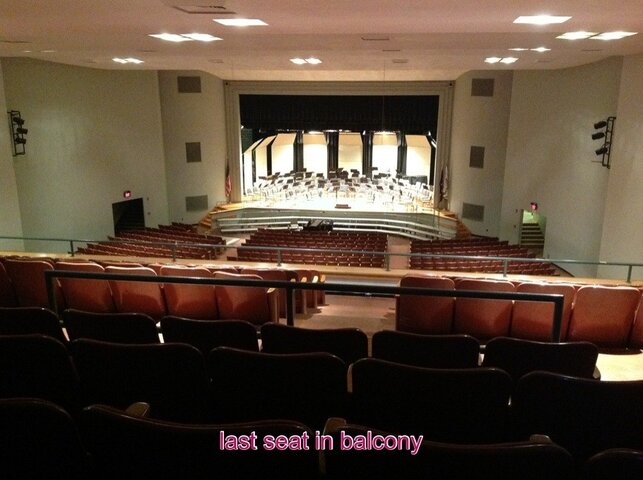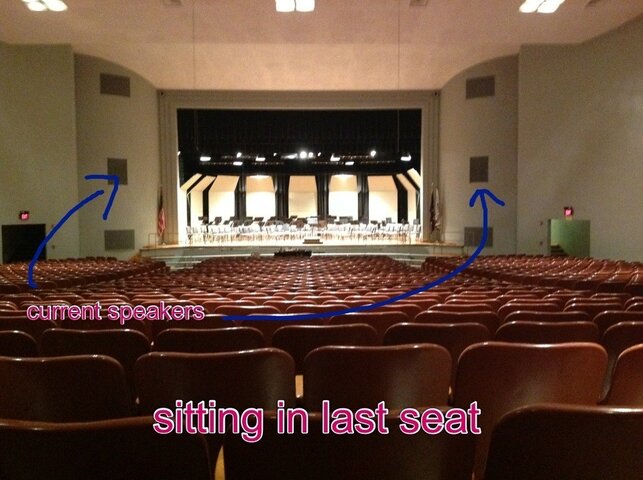We recently came up with some money to finally replace speakers, amps, (and dsp) in our auditorium. The local pro quoted 10 - Bose ma12 speakers, 2 - mb12 bass modules, 5 - Crown CDI amps (1000 and 2000), and 2- Biamp Nexia Sp processors for the room. I have never heard these units, and it seems like a strange setup. He said current equipment would not suffice for dsp. I would have preferred a Bose Roommatch array system, for the tight area control it offers - no idea how much this would cost. I know what many think about Bose, so I have also looked into Yamaha, Jbl, and QSC. Total budget can not exceed $20k, but would prefer to be less.
Current problem: 2 side speakers are set in the wall at a 45 degree angle to the stage and are running 100w each from a 140w school P.A. Amp. The only input on the amp is mic level, and it was literally designed to have 1 mic to speak. The room is very live with minimal acoustic treatments. There is no $ set aside for acoustics, although it is recognized as something that needs to be addressed in the future. I have adjusted the speaker angle, but there is no way to avoid pointing them at the front of the balcony, which is a huge untreated surface, reflecting everything back at the stage.
House: seats 1,400. About 140' deep and 83' wide not including the stage. Balcony does not obstruct view or sound to seats below.
Current equipment: Yamaha LS9-32, DBX Driverack 260, AKG WMS 450 wireless (18 headsets, 2 handheld dynamic), 3 Audio Technica hanging choir mics, various Crown PCC and wired handheld mics.
Room uses: Large scale school musical, school concerts, assemblies of various needs and adult community orchestra concerts. One goal is to increase rental of the space to outside organizations.
Any opinions would be welcome. Thank you!
Current problem: 2 side speakers are set in the wall at a 45 degree angle to the stage and are running 100w each from a 140w school P.A. Amp. The only input on the amp is mic level, and it was literally designed to have 1 mic to speak. The room is very live with minimal acoustic treatments. There is no $ set aside for acoustics, although it is recognized as something that needs to be addressed in the future. I have adjusted the speaker angle, but there is no way to avoid pointing them at the front of the balcony, which is a huge untreated surface, reflecting everything back at the stage.
House: seats 1,400. About 140' deep and 83' wide not including the stage. Balcony does not obstruct view or sound to seats below.
Current equipment: Yamaha LS9-32, DBX Driverack 260, AKG WMS 450 wireless (18 headsets, 2 handheld dynamic), 3 Audio Technica hanging choir mics, various Crown PCC and wired handheld mics.
Room uses: Large scale school musical, school concerts, assemblies of various needs and adult community orchestra concerts. One goal is to increase rental of the space to outside organizations.
Any opinions would be welcome. Thank you!





